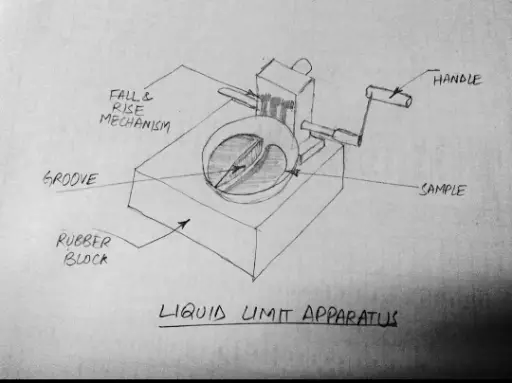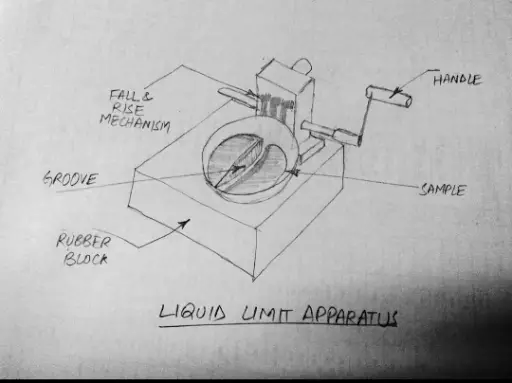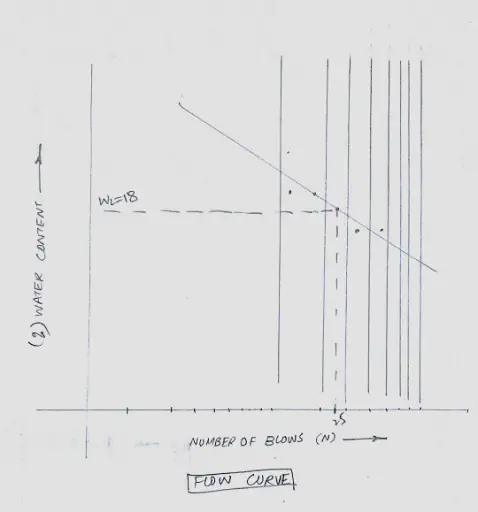Saad Iqbal | 🗓️Modified: October 14, 2016 | ⏳Read Time: 6 min | 👁Post Views: 1697
Have you ever visited a beach? Played with sand castles? If yes than you are lucky enough to physically use one of a very vital and important characteristic of soil which is termed as plasticity. Soil when added or applied with water go through many stages and phases. When water or moisture is absent soil is in dry state which is termed as solid state; in this state soil has sufficient shear strength and resistance for any shearing that may occur. When the soil is added with water enough to make it paste like material it is termed as plastic state; in this state the soil can be molded into any shape without breaking and thus called plastic. If more water is added into the soil it will start flowing like a liquid; this state is termed as liquid state.
This scope of this article is limited therefore we can not explain this in detail we will do that in another article so stay updated for any future article.
Water, due to its dipolar nature, reacts with negatively charged fine particles of clay mineral present in the soil; this reaction, termed as adosption of water is the basic reason of the plasticity.
Atterburg who was a Swedish Agriculture engineer explained that fine-grained soil can exist in four states namely, liquid, plastic, semi-solid or solid state. The water contents at which the soil changes from one state to the other are known as consistency limits or Atterberg’s limits.
Now lets talk about Liquid Limit, what it actually is and how we can determine the liquid limit of the soil with the help of an apparatus called Casagrande’s Apparatus.
The moisture content or the amount of water that is required for a soil sample to change its state from liquid to plastic is often termed as Liquid Limit. It is actually water content therefore has no unit but expressed in percentage of the unit of soil.
If a soil sample has moisture content equal to its liquid limit than such a sample is expected to have minimum shear strength and is practically like a liquid. As already mentioned that the plasticity of the soil sample is due to presence of fine clay particles therefore the liquid limit of any soil sample depends directly on the amount of the fine clay particles i.e. if more clay content than more will be the liquid limit.
The other atterberg limit is plastic limit which is determined in some other way that will also be explained in separate article.
However, these two states are actually determined to find out the plasticity index of the soil which is further used to classify the soil based on USC or AASHTO soil classification systems.
Casagrande’s Apparatus
There are actually two methods to determine Liquid Limit of Soil one is by Casagrande’s Apparatus and other is by cone penetration method. Mostly Casagrande’s Apparatus is used to determine Liquid Limit of Soil.
As shown in the Figure, Casagrande’s Apparatus consists of a brass cup which during operation falls from an adjustable height of usually 1 cm on a hard or rubber base. Handle is rotated in a suitable pace which with fall mechanism installed lifts the cup and drops it on its own weight. This process produces shear stress within the soil sample that is contained in the cup.
In order to perform this test you need to have following apparatus
Apparatus
1. Porcelain dish
2. Spatula or Knife
3. Grooving tool
4. Balance
5. Liquid Limit Apparatus (Casagrande Apparatus)
6. Drying oven
7. Containers for moisture content determination
Let us now discuss about the procedure;
Procedure
From the soil, taken from the test field whose liquid limit is to be determined, 100 to 120 grams of air dried mixed proportion passing through sieve No. 40 (0.425 mm) is added with distilled water in a dish. Water can be added in increments of 1 to 3 ml.
After addition of sufficient water, which is thoroughly mixed, a uniform paste is developed which is placed into the brass cup with the help of knife or spatula. The extra soil from the top is removed and a groove tool (may be ASTM or AASTO) is used to make a groove of 1 cm maximum depth.
The groove must be cut from the symmetrical axis marked on the apparatus.
The AASHTO groove tool cuts a groove of width 2 mm at the bottom, 11 mm at the top and 8 mm deep. The ASTM tool on the other hand cuts a groove of 2 mm at the bottom, 13.6 mm at the top and 10 mm deep.
If your soil is normal fine-grained soil you must use AASHTO or Casagrande tools whereas for sandy, fine grained soil ASTM tool is recommended.
After the groove is cut the cup containing the sample is lifted and dropped by turning the lever at a rate of approximately two revolutions per second until the two sides of the sample come in contact at the bottom of the groove along a distance of 13 mm.
The number of blows or shocks that were required is either counted or sometimes a recorder is installed on the device which automatically records the blows.
The soil in the cup is again mixed, and the test is repeated until two consecutive tests give the same no. of blows.
About 15 gm of soil near the closed groove is taken for moisture content determination in the container.
Liquid limit is actually that water content at which 25 blows of Casagrande’s apparatus will let the two parts of the soil sample to meet along a length of 13 mm.
To happen this in exact 25 blows is very difficult therefore a range of blows around 10 to 40 is taken and than a plot is prepared between water content on y-axis and no. of blows on x-axis on a logarithmic graph.
The plot is approximately a straight line and is known as flow curve. The liquid limit is obtained from the plot corresponding to the 25 blows as shown:-
The rappings in the liquid limit device cause small shearing stresses on the sample. The liquid limit is arbitrarily taken as the water content when the soil has shear strength just sufficient to withstand the shearing stresses induced in 25 blows. The shear strength of the soil at the liquid limit is

about 2.7 kN/m2.


 about 2.7 kN/m2.
about 2.7 kN/m2. 

 about 2.7 kN/m2.
about 2.7 kN/m2.